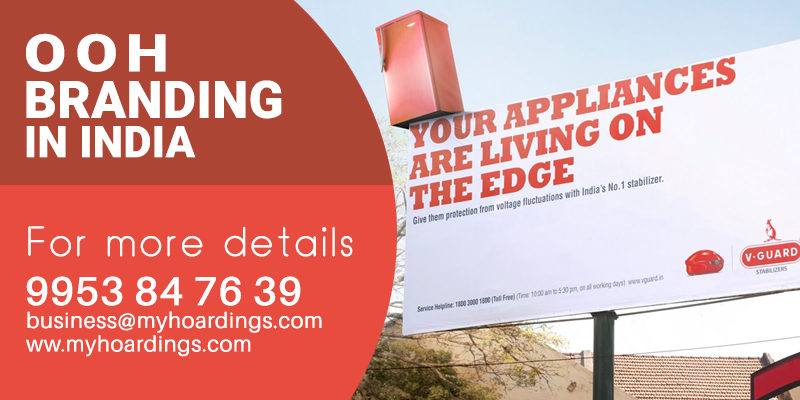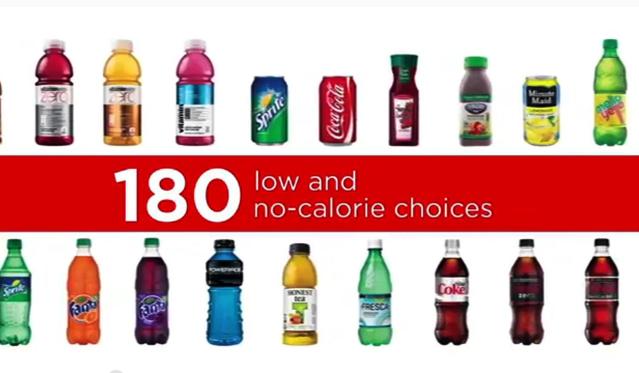
Digital media advertising has seen a transformation in the past decade. It is expected to account for 60% global advertising spend by 2025. A key part of this change has been the move from walled-garden content consumption to a more active experience. The result is that revenues have been consolidated on major technology platforms like Google and Facebook.
The value of digital advertising has been driven by the adoption of real-time programmatic ad technology. This has enabled a better delivery of ads while also allowing consumers to have a more customized experience. This has resulted in a progressive concentration on revenues by Big Tech firms. Google has been recognized by the Competition and Markets Authority, (CMA), as the most dominant participant in the digital advertisement ecosystem.
The impact of data targeting techniques has also led to an increase in advertising images. While this may sound like a good thing, it is worth noting that the use of such techniques is not a panacea. Because of the complexity and nature of the bidding process, it is hard to measure ad effectiveness.

Advertisers are shifting to social media channels as more people access the internet via their mobile devices. To reach a larger audience, they are now using pop-up ads and third-party ad placements.
The future of digital media is uncertain, even though digital advertising is developing at an ever faster pace. For now, the next step is to map the digital media ecosystem and identify players in your local market.
Before a business starts to invest in digital mediums, it should first determine its goals. These should include a number of quantity and quality measures. If engagement is the objective, the most common KPIs would be reviews, registrations or subscriptions. A landing page should reflect the brand's identity.
A communications brief should be given to all involved parties, including advertising agencies. The brief should highlight the importance and challenge media agencies to find relevant channels. In order to be effective, the brief should include a meeting between the media sales team and the brief.

A media planning process that is clear and concise is another important aspect of any communications brief. By ensuring that your agency has a defined process, you can ensure that your media buys are not just profitable but will also help your business achieve its objectives.
Quality and quantity are the key ingredients to a successful digital media advertising campaign. The most important aspect is choosing media that will cause enough change in the consumer's behaviour to affect sales. This may mean using display ads to influence online shoppers, or using social media to reach the most relevant consumers. No matter what media strategy you use, it will still need to be monitored and reviewed regularly.
The impact regulation has on digital media advertising is crucial. The proliferation of privacy issues has had a major impact on digital media advertising. Regulatory considerations could have a significant effect on the ecosystem.
FAQ
What is advertising?
Advertising is an art. Advertising is not about selling products. It's about building emotional bonds between brands and people.
Advertising is about communicating ideas through images and stories.
You must communicate clearly and persuasively. And you need to tell a story that resonates with your target market.
Advertising is therefore different from other forms such as presentations, writing, and public speaking.
Because when you create a successful ad campaign, you are creating a brand identity for yourself.
This is how you make yourself memorable. You are someone people remember.
Is there any way to get free traffic?
Free Traffic refers to the traffic that comes directly from organic search results without paying for ads. This type of traffic is known as organic traffic or natural traffic. There are many methods to obtain free traffic such as article marketing or social media marketing.
Article Marketing is a popular way to get traffic for free. It has an extremely low cost-per-click (CPC). Paid ads have a higher CPC, but the CPC is typically much lower than paid ads. Content marketing is also known by the term article marketing.
Social Media Marketing - These social media sites, such as Facebook, Twitter or LinkedIn, allow you to advertise your business. These platforms are great for sharing updates, sharing photos, and building relationships with potential clients. Many businesses choose to pay for ad space on social media websites because they want to reach a wider audience at a lower price.
Blogging - Another great way to generate traffic is blogging. Writing quality content that people like reading will help you attract visitors. Once you're attracting visitors, you can monetize your blog by selling products or services.
Email Marketing – Email marketing has been around ever since the dawn of the Internet. However, it remains one of your best methods to drive traffic to you website. Email marketing is an effective strategy to grow your subscribers and eventually sell things.
What is branding?
Your brand is your way of communicating who you are as well as what you stand behind. It is how people remember your name.
Branding is about creating a memorable brand identity for your company. A brand isn't just a logo. It also includes everything you do, including your physical appearance as well as the tone of voice that employees use.
Customers feel more confident buying from your company if they have a solid brand. They know what they're getting. It gives customers confidence when choosing your products over the ones of other competitors.
Apple is a great example of a brand-named company. Apple's brand is recognized worldwide for its clean design, high product quality, and great customer support.
Apple's name is synonymous with technology. Apple is what people associate with when they see a phone or computer.
You should think about creating a brand if you are considering starting a business. This will give you and your business a face.
What do you need information about print advertising
Print advertising is a great medium to communicate with customers. Many companies use it to promote products and services. The goal is to get the consumer's attention.
Print ads are typically one page long and include text, images, logos and other graphics. Print ads can also contain sound, animation, videos, and hyperlinks.
The main types of print advertisements are classified as follows:
1. Brochures - These are large format printed pieces designed to attract people into stores. They often have colorful pictures and eye-catching designs.
2. Catalogues - These are smaller versions of brochures. These are typically sent to customers who ask for specific information.
3. Flyers - These are small pieces of paper distributed at events such as concerts and fairs. They can be given at retail outlets but must be paid for.
4. Flyers are also available in posters. They can be displayed on fences, walls, or buildings. They are created by computer software programs in order to grab passersby's eyes.
5. Direct mail – These are direct mail letters and postcards sent to potential customers. These are sent to customers periodically by businesses to remind them about their business.
6. Newspaper ads - These ads are published in magazines and newspapers. These ads are often quite long and include both text and images.
How much does it cost to advertise on social media?
This route is not for everyone. You'll be charged monthly according to how long you spend on each platform.
Facebook - $0.10 per 1000 impressions
Twitter - $0.20/1000 impressions (if applicable)
If you send out invitations to Linkedin, $0.30 per 1,000 impressions
Instagram - $0.50/1000 impressions
Snapchat - $0.60 Per 1,000 Impressions ($0.40 per User)
YouTube - $0.25 Per 1,000 Views
Tumblr $0.15 for 1,000 impressions text posts
Pinterest - $0.05 per 1,000 impressions per month
Google + - $0.15 - $0.20 per 1 Million Impressions
Tumblr: $0.15-$.20 per 100,000 impressions
Vimeo - $0.20 to $0.25 per 10,000 impressions
Soundcloud – $0.20-$0.25 for 1 million plays
StumbleUpon - $0.20 -$0.25 per 1 billion pageviews
Digg - $0.20 to $0.25 per 1000 diggs
Reddit: $0.20-$0.25 for 1000 comments
Wordpress $0.20-$0.25 per 500 Comments
Flickr - $0.20 -- $0.25 per 5,000 photo uploads
What is the best way to advertise online?
Internet advertising is a key part of any business strategy. It allows companies to reach potential customers at low costs. There are many options for internet advertising. Some are free and some require payment.
There are also several ways to advertise on the internet, including banner ads, pop-up ads, search engine optimization (SEO), pay-per-click (PPC) advertisements, social media marketing, e-mail marketing, and mobile marketing. Each method has its advantages and disadvantages.
What do you need to know about radio advertising?
You should understand how the different types of media affect each other. Remember that media can complement each other and are not necessarily competitive.
Radio is best used as an extension of television advertising. Radio can complement TV advertising by reinforcing key messages, and providing additional information.
Radio listeners are often not able to handle long TV commercials. Radio ads are usually shorter and less expensive.
Statistics
- Google will display whichever ad type (CPM or CPC) is expected to earn more revenue for the publisher, which is in Google's best interest since they take a 32% share of the revenue. (quicksprout.com)
- It's 100% reliant on your website traffic. (quicksprout.com)
- Advertising's projected distribution for 2017 was 40.4% on TV, 33.3% on digital, 9% on newspapers, 6.9% on magazines, 5.8% outdoor, and 4.3% on radio. (en.wikipedia.org)
- Worldwide spending on advertising in 2015 amounted to an estimated US$529.43 billion. (en.wikipedia.org)
External Links
How To
How to show ads on a website
Advertisements are an important part of any business. They enable you to reach new customers and keep them coming again.
Advertisements allow you to promote products and services without spending money.
Google Adsense is a way to display image or text ads on your blog or website.
Google Adsense lets you earn revenue for each click on the ad links on your website. Set up your ads without writing any code.
To get started, just sign up for a free account at www.google.com/adsense. Next, follow these steps.
-
You can create ads with the Ad Builder tool. You can create a variety of ads with the Ad Builder tool, including text ads, images, videos, and interactive ads.
-
Once you've created your ads and uploaded them to AdSense, To do this, select "Upload" under the "My Ads" section in the left-hand navigation bar.
-
Next, add keywords that are related to your product/service so your ads show up in search results relevant for your niche.
-
Finally, copy the ads you want to paste into the appropriate parts of your website. Once you've completed all of this, your ads are automatically uploaded to the website.
-
When visitors click on one of your ads, they'll be directed to another page on your site where they can purchase your products and services.
-
Every time someone clicks one of your AdSense ads, you earn earnings.
-
You can view reports showing the performance of your ads by going to the My Account tab in the top right corner of your AdSense dashboard.
-
You can also save your earnings as CSV files.
-
You can modify your ads and target audience to increase your earnings.
-
You can also stop or delete ads at any point.
-
For any questions or concerns, you can contact us.